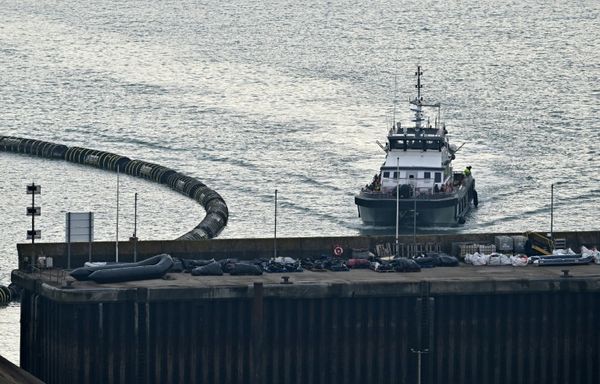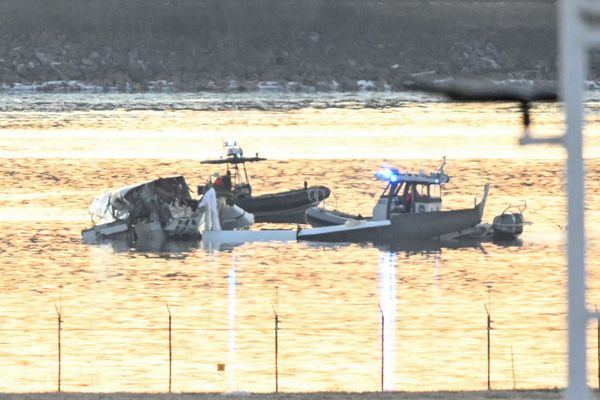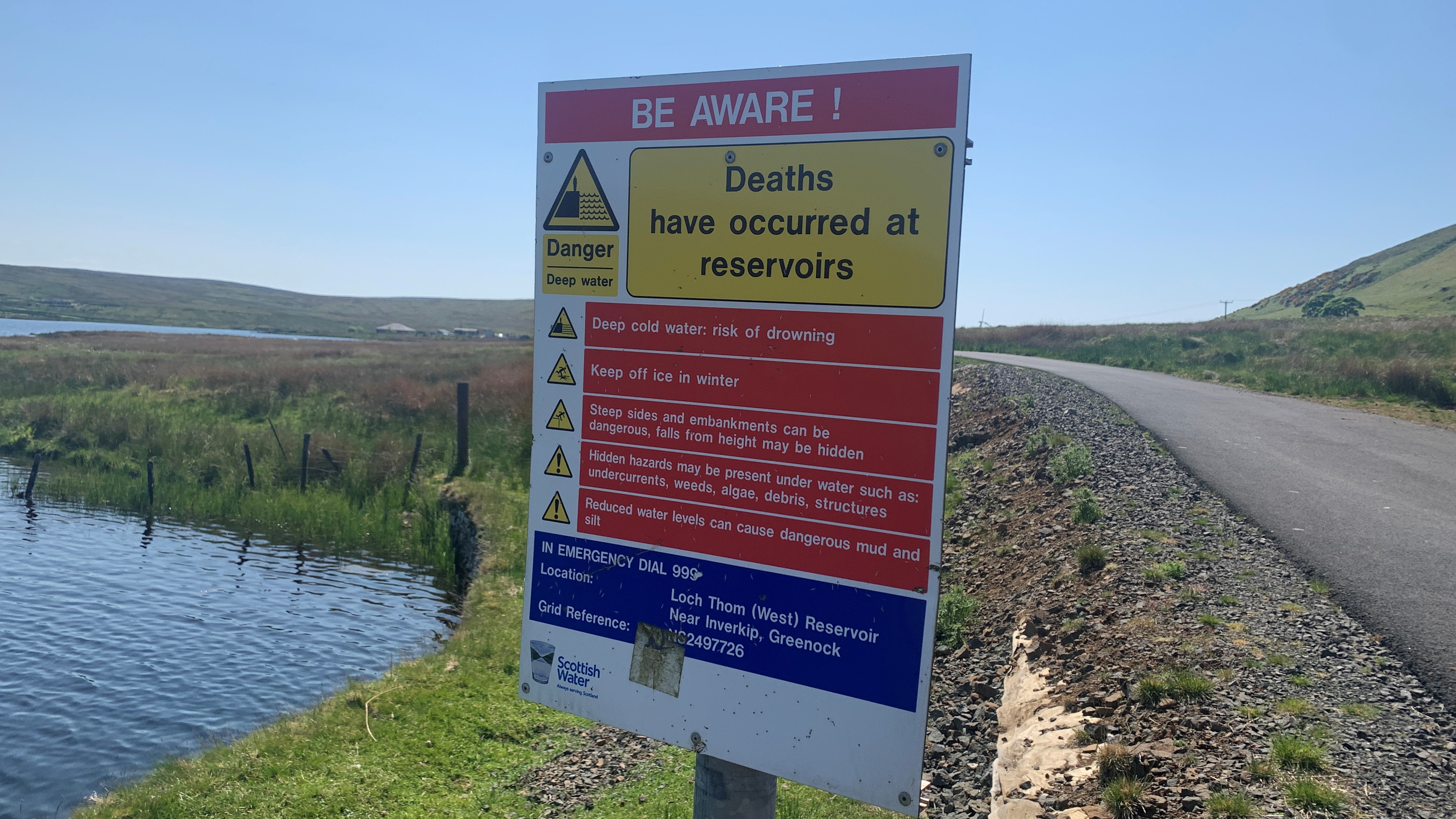
Why are reservoirs so dangerous for swimming? Are they all dangerous or can you safely swim in some of them? We asked a couple of our hiking experts to look into these questions. Let's start with a tale to give pause for thought.
Advnture contributor Alex Foxfield was recently hiking in the Scottish Highlands, looking to take on a route called the Cruachan Horseshoe. It's a grand loop that takes in two Munros and features wonderful views across the West and Southern Highlands. He was also well aware of the immense power that lurked beneath his hiking boots.
The Cruachan Reservoir at the centre of this loop is part of the Cruachan Power Station, a vast hydroelectric pumped storage system that can produce huge amounts of energy for the power grid in an instant. It does this by releasing gigantic amounts of water through turbines to Loch Awe, some 400 meters below the reservoir. There are many warning signs on the trails.
Imagine swimming in this otherwise benign-looking reservoir, only to find yourself caught in a current and swept under, carried through the turbines to be spat out almost half a kilometer below. Suffice to say, in three visits to the mountain, Alex has never seen a swimmer in the reservoir.
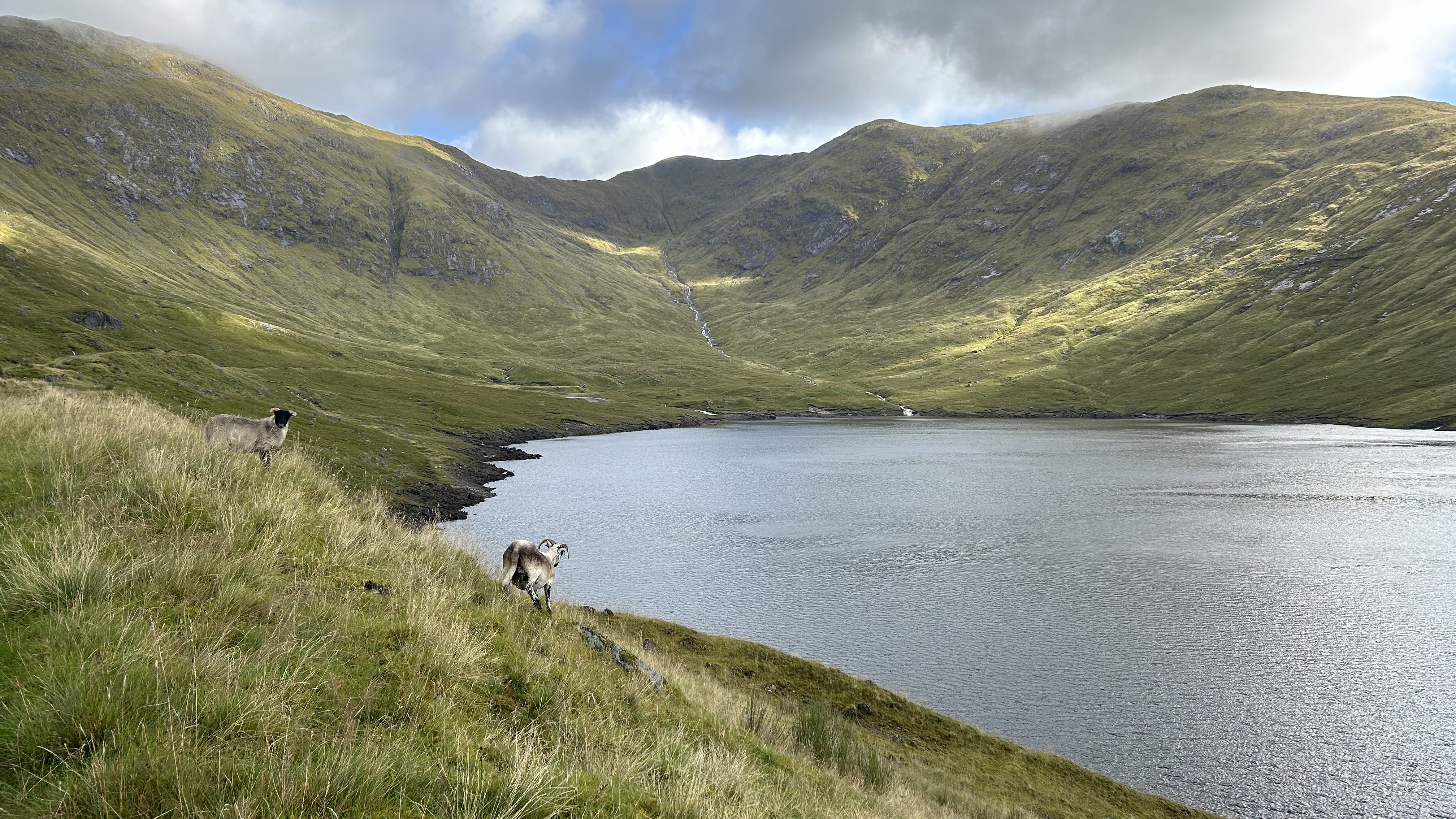
Why are reservoirs so dangerous for swimming?
Many reservoirs may not be a whole lot more hazardous than any other body of water, but a few unique risks such as steep concrete sides and hidden equipment and currents do exist.
These hazards, combined with the fact that reservoirs are often easily accessible and look pretty benign compared to a roiling ocean can increase your chances of making poor decisions, especially when it’s hot out and you’ve been slogging away in your hiking boots for hours.
There are several reasons why reservoirs are dangerous for swimming and why water companies signpost warnings. For more detail on these hazards, click the links below or scroll down the page:
- Liability – reservoirs are owned by water companies and councils, so it's no surprise that they won't want accidents occurring.
- Temperature – the low temperature in reservoirs can bring about cold water shock.
- Steep sides – reservoirs often feature steep sides that are difficult to climb back out from.
- Depth – reservoirs can be very deep, which can lead to extremes of temperature.
- Unseen currents – reservoirs can have currents due to pumps and water release mechanisms
- Equipment – hidden equipment or machinery could pose a danger
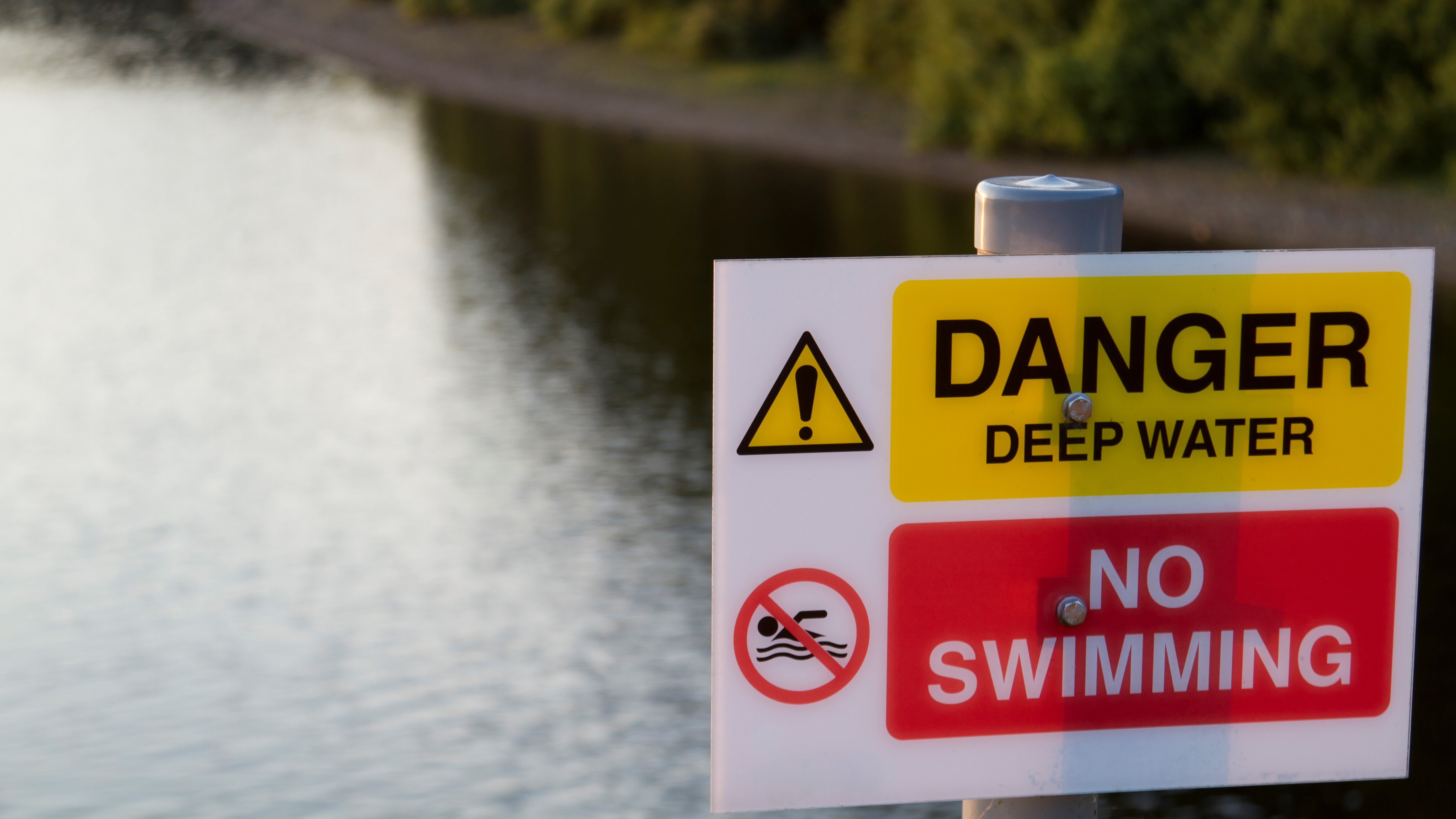
Meet the experts
Today's best deals
The issue with reservoirs and wild swimming
- Reservoirs can be popular and accessible wild swimming destinations
- There are often signs that warn of danger to life
With the temperatures rising, very few if any of my hikes and trail runs don’t involve a quick dip. Though I prefer a shallow stream with a waterfall, a Scottish loch or a salty dip in the sea for wild swimming, quite a few of my favorite spots are reservoirs, and I’ve been intrigued (and slightly disturbed) by a common sign at every one, which reads: Deaths Have Occurred at Reservoirs.
Setting aside the odd wording, the message is enough to make you think twice, so I wanted to find out why reservoirs in particular are considered so dangerous. After all, surely deaths have also occurred in lakes, rivers and the sea? Drowning and cold water shock are very real hazards of any open water swimming, but why is this risk higher? After all, Lake Powell is a reservoir and it’s one of the most popular water sports areas in the US.
Reservoirs are often easily reached by road so people can just drive up, put their water shoes on and jump in, so I wanted to understand why they’re so dangerous. Once I started to look into the matter, I found some mixed messaging on the topic. Various government bodies warn of the dangers, while some wild swimming experts advise that while there are some unique risks, others may be no different to swimming in a lake. After taking a deep dive into this issue, I dredged up a few hazards and a few myths about the dangers of swimming in reservoirs.
Liability
- Reservoirs are owned and managed by water companies or councils
- They exist to supply water, generate power and/or control flooding
- Companies want to avoid liability for any accidents that may occur
Let’s start by saying that one of the main reasons you may see warning signs at reservoirs and not other bodies of water is because reservoirs are always the property of someone, usually a water company or governing body like a local county or council. Reservoirs primarily exist to act as a water supply, control flooding or generate power and they are constructed and maintained by the government or a private company who for obvious reasons have a vested interest in you not dying on their property. So the alarming signs are partly down to liability issues, whereas a lake in the wilderness may not be managed by anyone, unless it’s somewhere like a National Park.
Temperature
- The water in reservoirs can be very cold even in the height of summer
- The surface may be warm, but the water beneath can be much, much colder
- Cold water can induce cold water shock
The biggest warning that you’ll see is that reservoirs are very cold, even in the height of summer. Cheshire Fire and Rescue Services (CFRS) warns that the reservoirs in northwest England rarely get above 50°F (10°C), and while that may be true, it’s not necessarily the case that a reservoir would be any colder than a lake of a similar size and depth, according to the Outdoor Swimming Society (OSS).
As they explain, warm weather in the summer will heat the top layer of any body of water, below which there will be a much colder layer called the Thermocline. Even if the top layer feels warm, if you jump in you can suddenly find yourself surrounded by much colder water which can induce cold water shock, so when entering any body of water, you should do so gradually and have your best camping towel and dry clothes at the ready for when you get out. Cold water shock can lead to hypothermia, drowning or a heart attack in the worst cases.
To return to the original point though, yes a reservoir can be cold, but not necessarily more so than any other body of water.
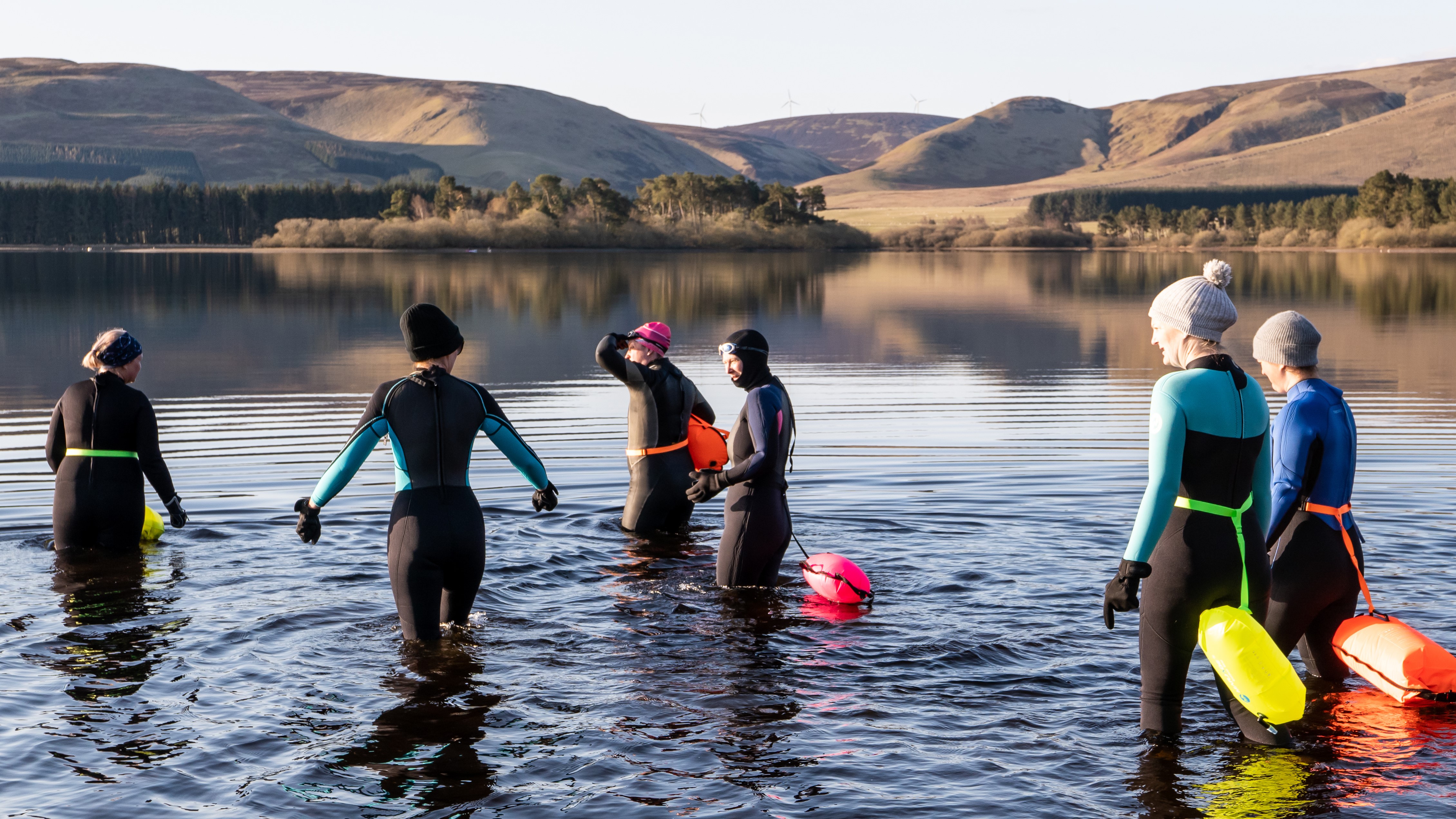
Steep sides
- Reservoirs are man made and often feature steep sides
- These can be very difficult to climb out from
Reservoirs are usually man made, so compared to lakes, rivers and oceans which often have gradual, sloping edges, a reservoir might have been constructed to have steep, concrete sides. These sides may be covered in plant life which makes them extra slick, posing two dangers: first, you can slip getting in, especially if you’re barefoot, and second, it can be more difficult to climb back out. It’s not usually like a swimming pool where there are ladders on the sides.
Now this isn’t always the case. My local swimming spot is a natural reservoir, so the edges are just like those of a lake. Furthermore, you can find this same hazard in natural spots – my friend Heather once found herself unable to get out of a steep-sided rock pool outside of Yosemite National Park for nearly an hour. However, steep sides do form a potential for added risk with many reservoirs.
Depth
- The depth of reservoirs make them unsafe for novice swimmers
- Deep water can also lead to mixed temperatures
In addition to steep sides, many reservoirs are very deep or become deep very quickly with sudden changes of depth. This can pose two risks. The first is if you’re not a confident swimmer, in which case you might find yourself easily out of your depth and in deep trouble. This is a risk you can avoid by not exploring beyond your own capabilities and using buoyancy aids.
It can also mean that the water temperature will be colder, or more mixed. Why this occurs depends on a few factors, but one main reason being that a deeper reservoir will have more cold water at the bottom, and if that water is between freezing and 37°F (3°C), it will be less dense and therefore rise to the top. However, lakes can be deep too – Crater Lake is nearly 2,000ft deep in parts and very cold, but people swim here every year. So this is a danger, but not necessarily one unique to reservoirs.
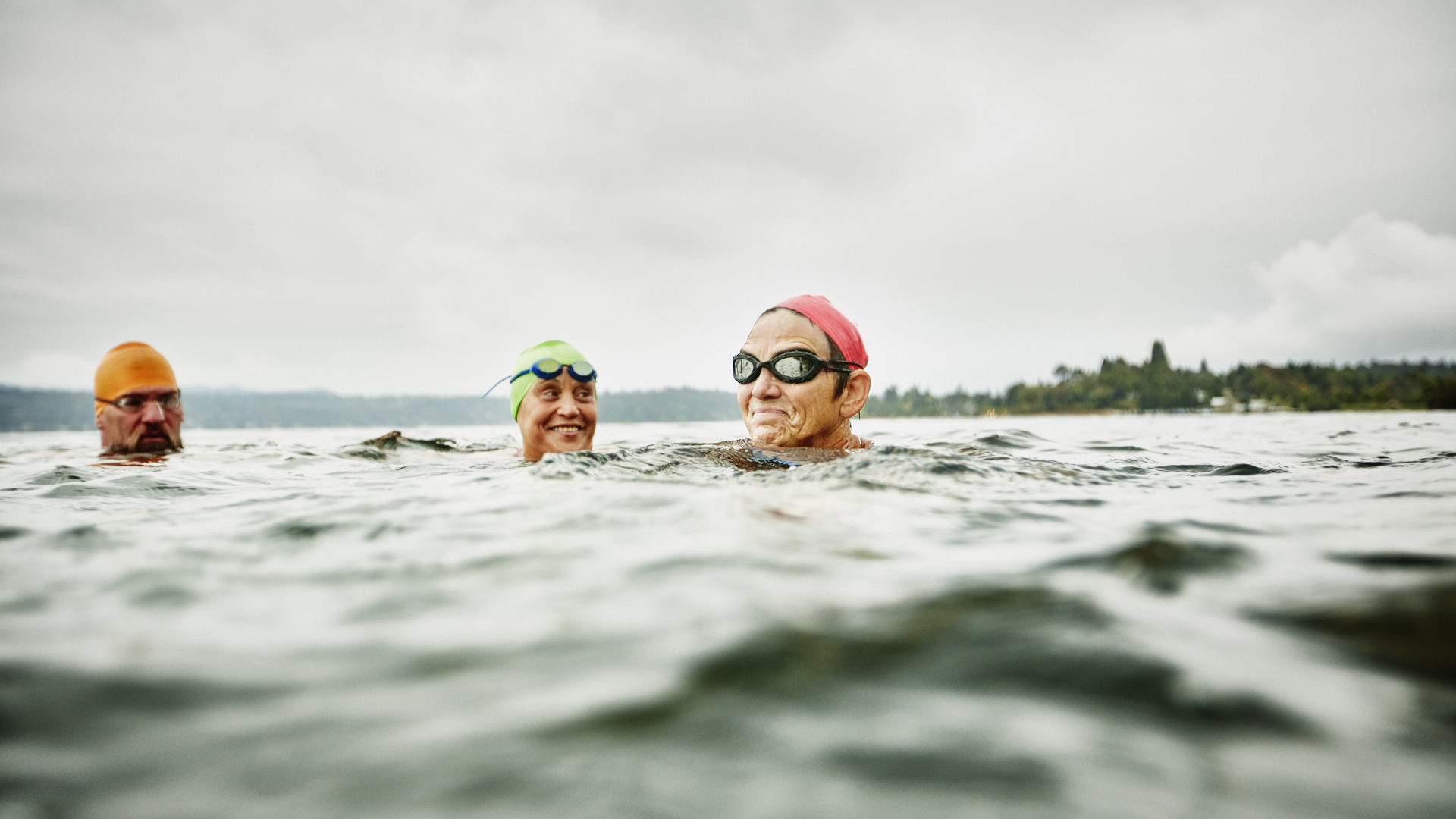
Unseen currents
- Pumps and water release mechanisms can cause strong currents
You might think, as I used to, that a reservoir won’t have any currents at all, at least while the dam is closed. A couple of summers ago, however, I was floating in a nearby reservoir (which was warm enough that day to stay in for up to 15 minutes, by the way) and I became aware that I was slowly but surely being pushed south. Strange, I thought, since this is a reservoir. However, according to the BBC, reservoirs can have currents due to pumps and water release mechanisms that you can’t see on the surface or hear, but could potentially make swimming more difficult, especially if you’re not a strong swimmer to begin with. Needless to say, many natural bodies of water have currents that may be a lot stronger, but the unseen nature of reservoir currents can lull you into a false sense of security.
Equipment
- Hidden obstacles in the water can pose a hazard
- Always avoid swimming near dams, towers and buoys
Finally, according to CFRS, there may be hidden obstacles in the water in the form of machinery and equipment that could pose a danger to your health. These could entail hazards such as metal that you could cut yourself on. However, the OSS advises that it’s more obvious pieces of equipment that you’ll want to give a wide berth, such as swimming near dams and towers, where there might be strong currents, and aerators which should be marked by buoys and are areas where you can lose buoyancy. Again, not great if you’re not a strong swimmer. So, avoid swimming near dams, towers and buoys.
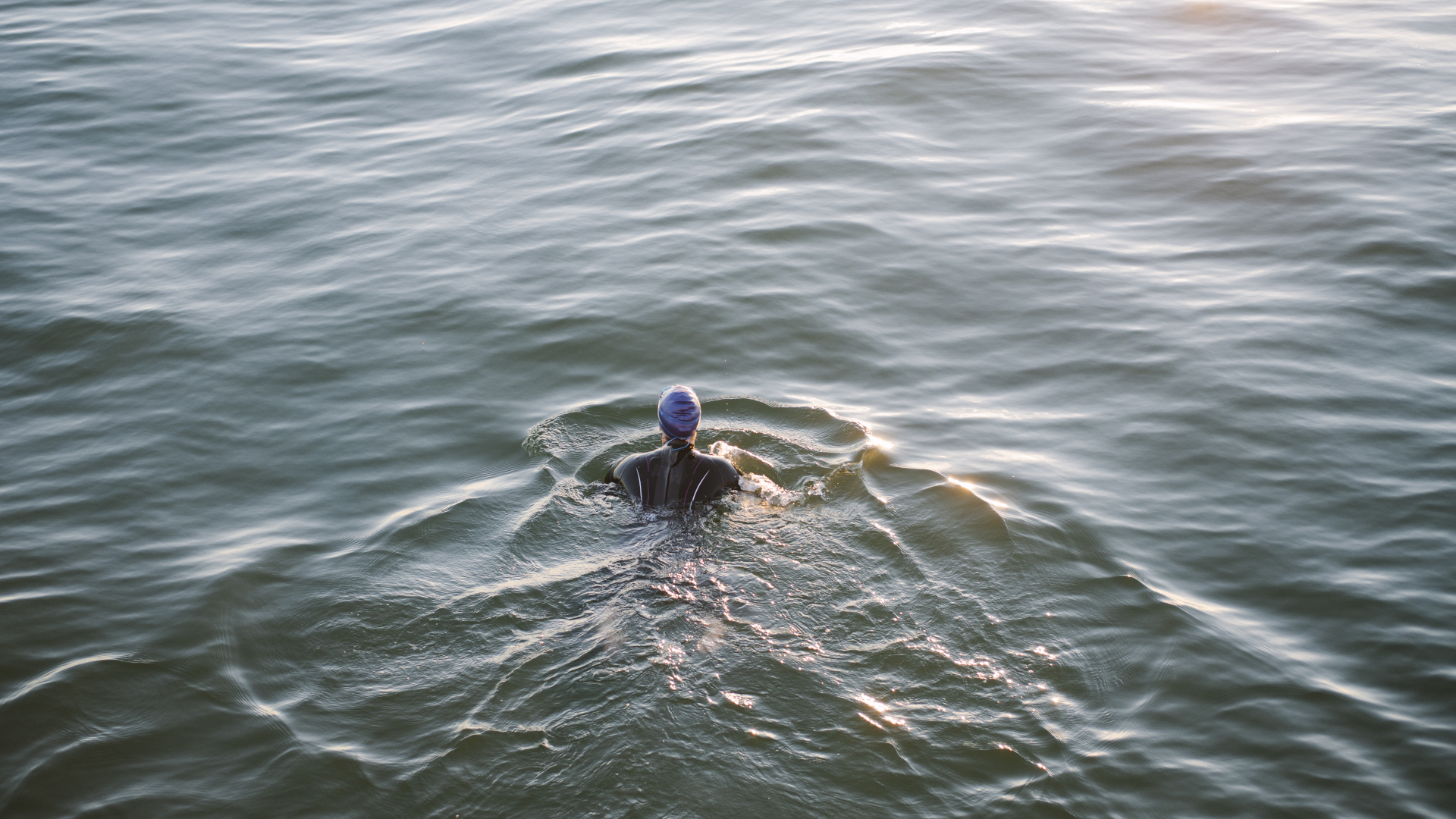
So, should you swim in a reservoir?
We would not advise swimming in any reservoir if there are clear warnings not to.
However, if the reservoir you want to swim in is a popular swimming spot and there are no warnings to the contrary, it’s probably free from many of the hazards above, but in any reservoir you’ll want to practice safety first any time you’re wild swimming, so start with our safety tips for swimming in open water.
